The Polaroid Impulse AF is one of the most celebrated instant cameras. Despite being produced between 1988 and 1994, this vintage polaroid camera still receives a fair amount of attention. For some instant photography lovers, this is one of the best (if not the best) polaroid cameras ever made. So, after using one for more than half a year, I decided to write a long Polaroid Impulse AF review and see if the camera deserves the hype.
I already shot a couple of my Polaroid Diaries with the camera, and some images are already in my Polaroid zines. However, I never really wrote about the shooting experience, and that’s what this review will be about. Therefore, in this article, you will read what I love about the camera and what I find unpleasant. In addition, you’ll also see some of my Impulse AF images and find my polaroid photography tips.
So, let’s start with the Polaroid Impulse AF review and figure out if you should buy one today.
*Some of the links are affiliate links. It means that if you buy something, I might earn a small commission at no additional cost to you.
Polaroid Impulse AF review: what I love about the camera

If you’ve already read some of my previous polaroid camera reviews (ex., the SX-70, the Sun 660, or the Now+), you know that I always start with the things I love about the camera. And here’s what I love about the Polaroid Impulse AF.
Its lens is sharp
Photographers always search for a sharp lens when it comes to cameras. In polaroid cameras, a sharp lens can never be taken for granted: in the majority of models, the lens is plastic, and the Impulse AF is no exception. Surprisingly enough, I found the Impulse AF very sharp. And I’d go a step further and say that it’s among the sharpest I’ve seen on an instant camera.
Specifically, the Impulse AF features a three-element plastic lens with a fixed aperture (116 mm, f/9, or f/9,4, according to other sources). Moreover, the minimum focus distance is 90 cm (3 ft) and guarantees sharp photos. Overall, the lens performs great in various circumstances, and I must admit that so far, I have only had keepers with the Impulse AF, something rare for a polaroid camera.
The Sonar Autofocus is a huge plus
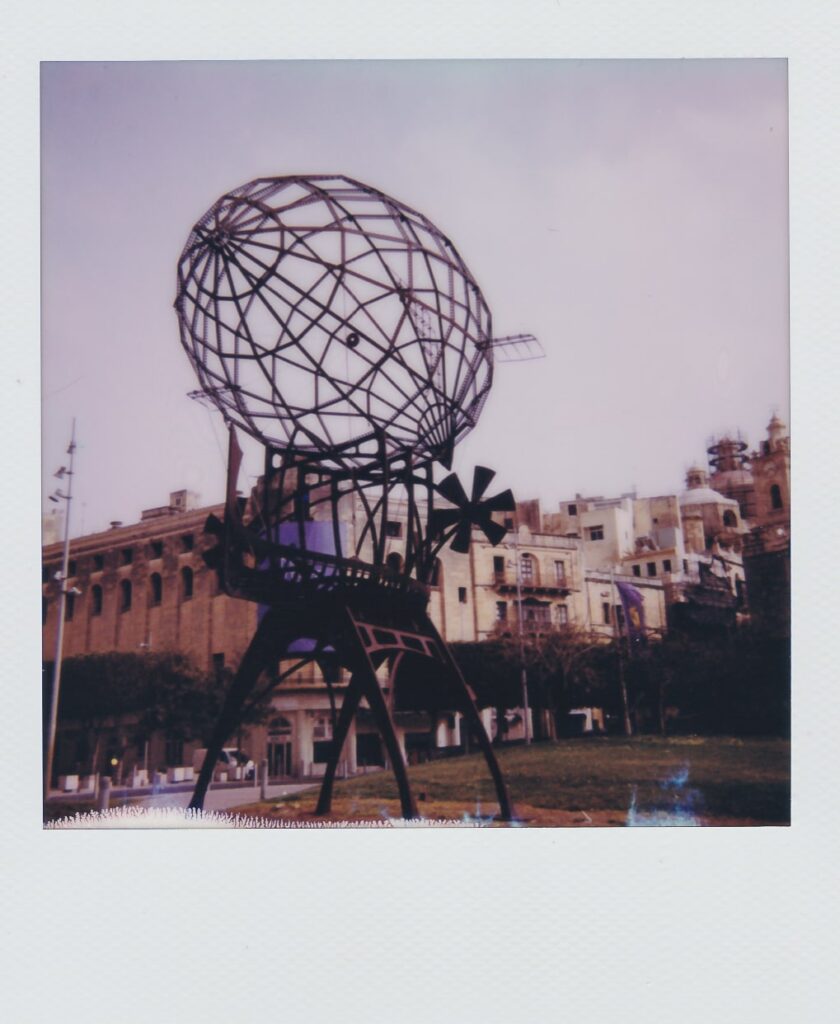
I wrote the same thing when I reviewed the Sun 660 AF. The Sonar Autofocus is a game changer when it comes to instant photography. The ring you see in the camera’s front transmits sound waves, and that’s how the camera focuses. If you think this sounds like a dolphin, I can assure you that it’s the same technique: the device sends sound waves to the subject, and when they return, the camera is ready to take a sharp image.
As you will see later in the photography tips, this might be challenging in some situations. However, most of the time, the Sonar Autofocus (paired with the sharp lens) guarantees that your photos will look nice and to the point.
Please keep in mind that Polaroid also produced fixed-focus lens models for the Impulse series. In my opinion, it deserves searching for an AF model because the Sonar Autofocus makes the shooting experience significantly smoother.
The Impulse AF has a nice design
I know: you shouldn’t judge a book by its cover. However, for most people, a good-looking camera is always a plus. While I never choose my analog or digital cameras by their looks (I mean, I shoot with a Ricoh GR ii…), a camera that looks good is a nice extra. The Impulse AF has a futuristic style representative of the era it was born, and holding it in hand feels like holding binoculars.
Despite being a plastic camera, the rubber grips make the camera feel solid in hand. Yes, it is still a plastic device, but this doesn’t mean it’s not a good-quality camera. Moreover, the fact that it turns on just by popping up the flash means you can shoot a photo pretty fast.
Overall, the Polaroid Impulse AF looks good and feels good when shooting.
Constant results with the Polaroid 600 film
Most vintage polaroid cameras use 600 films. The Impulse AF is one of the cameras that doesn’t need a battery to work. There’s one provided in the 600 film cartridge, and it’s enough to shoot all eight photos included (actually, you can shoot way more). The pairing of the Impulse with the 600 seems ideal because the images will always look good. The AF model that I have produced excellent results both during the day and at night, and I must admit I’m delighted with the results.
And that’s something that brings us to the next point.
The metering is spot-on
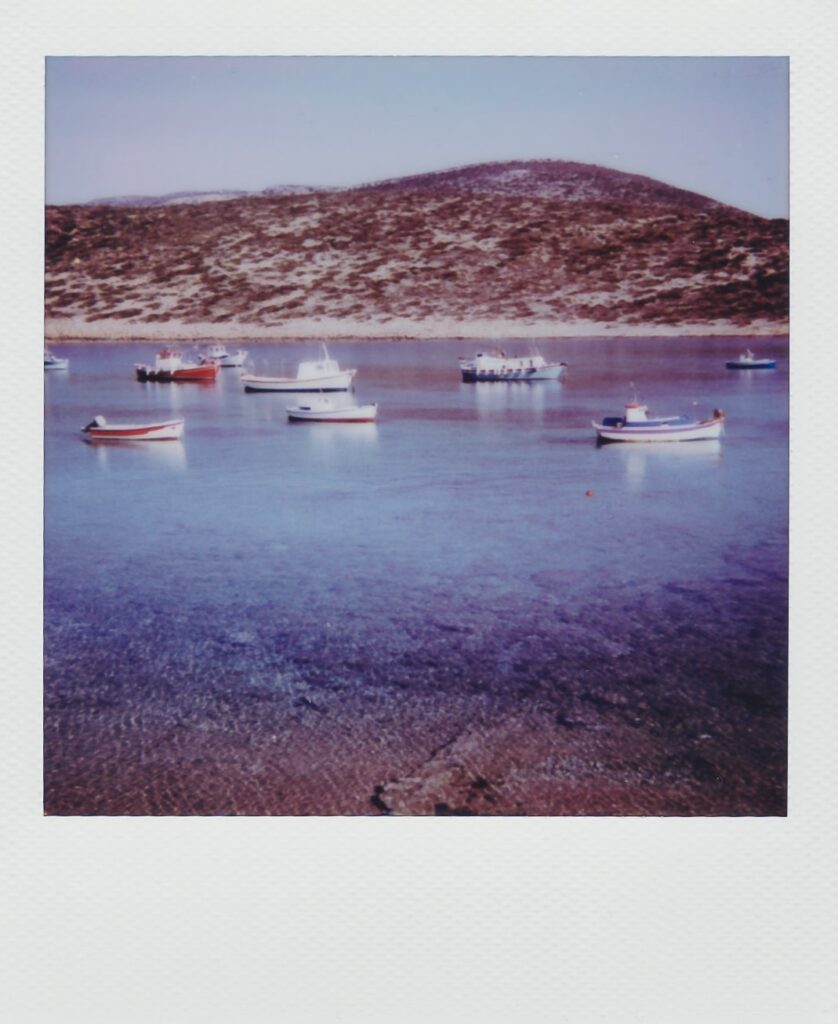
If you check my entire Polaroid Diary from Amorgos, you’ll see that the camera handled the intensive sunlight exceptionally well. On the other hand, in my Polaroid Diary from Malta, you’ll see how well the Impulse AF dealt with cloudy skies. The camera created presentable polaroids on every occasion.
What deserves to be noted here is that most of the time, I didn’t move the exposure wheel at all. Located straight beneath the lens, the exposure wheel lets you either darken or lighten the exposure. However, the camera’s metering is spot-on, and I rarely thought of changing it.
Last but not least, the Polaroid Impulse AF has one controversial setting: the flash is always on. That said, you cannot override it or handle it manually. The moment you decide to shoot a photo, the flash will fire. For some people, this is a big plus because it means even fewer settings; for others, it’s a big minus because it doesn’t leave enough room for creative shots.
I’ll write more in the next section about the flash, but given the camera’s excellent results, I had to include it in the metering part.
The most point-and-shoot Polaroid camera I ever used
Polaroid photography was always about capturing the instant. While the SX-70 is destined for experimentation and artistic results, the Impulse AF is probably the most point-and-shoot Polaroid camera I have ever used. Most instant cameras don’t require much effort to turn them on and have them ready to shoot. However, the fact that the Impulse AF turns on just by popping up the flash makes it unique.
Practically, within seconds you are ready to take a picture. You don’t have to unfold it or remove a lens cap. Moreover, you don’t have to activate the flash in the second step. The camera turns on quickly, and you don’t have to care about the settings. All you have to do is compose and shoot the photo.
Honestly, that’s one of the easiest Polaroid cameras I ever came across.
Polaroid Impulse AF review: what I don’t like about the camera
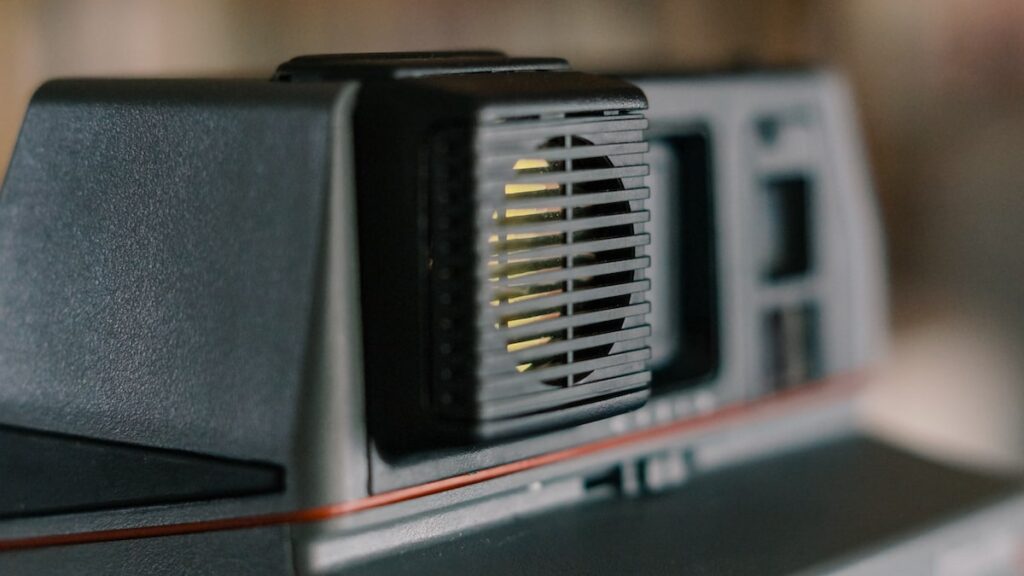
In this section of the Polaroid Impulse AF, I will write down the things I don’t like about the camera. To some, none of the things listed below might sound problematic. However, I couldn’t skip this section since I wanted to share my honest opinion about the camera.
So here’s what I find unpleasant about Impulse AF.
The camera feels sensitive (the flash turns on randomly)
Instant cameras are usually bulky, and their shape doesn’t make them ideal for transporting. Most of them won’t fit easily in your bag, and they’ll require some arrangement. The Polaroid Impulse AF is no exception to this rule.
Additionally, despite its nice design, the camera often felt sensitive to me. It doesn’t have the boxed style of the Sun 660 nor the folded design of the SX-70. The fact that the camera turns on with the flash means that you shouldn’t add anything to its top while carrying it. Even a pack of film on the camera’s top can pop its flash and turn the camera on. It happened plenty of times to me and made me worried that the battery was depleted.
But I want to be fair: despite finding the camera on plenty of times in my bag, I never run into an issue with a dead film battery. And, of course, the camera never shot a photo on its own while carrying it around. Nevertheless, I found it a bit uncomfortable that the camera was on randomly while searching for it in my backpack.
Sometimes you want to override the flash (and you can’t)

I wrote in the previous section how good the camera metering is and how the flash contributes to balanced images. However, the Polaroid Impulse AF features a flash that is always on. Even though this guarantees quality images, the truth is that it doesn’t leave enough room for experimentation.
A flash always on means the camera constantly searches for the most balanced exposure. As I figured out, even if you lighten or darken the images, you won’t see much of a difference. That said, if you are more artistic and enjoy experimenting with photography, the always-on flash might irritate you.
Since I own several instant cameras for me, it was never a problem to choose a camera depending on the results I wanted to have. I’d pick the camera based on my photographic needs, and everything would be fine. However, if that’s the only instant camera you’ll have, keep in mind that it’s great for balanced and good-looking photos but not for artistic shots.
The film price is on the steep side
Finally, this is my common complaint about polaroid photography and has nothing to do with the Impulse AF itself. However, since I enjoy shooting polaroids, a comment on the film price should always be there. Polaroid photography is an expensive hobby, and its main cost is not the cameras; it’s the film. A pack of film containing 8 photos costs almost 20 euros, and that’s definitely lots of money if you’d like to shoot pictures often.
The Polaroid Impulse AF is a joy to shoot photos with, but you should always keep an eye on expenses. I often use polaroid cameras for travel photography, and it’s not so easy to keep the costs down: for five films, you need 100 $, and this is a total of just 40 photos.
Long story short, I wish the film was cheaper. But it isn’t.
Polaroid Impulse AF review: Pros & cons of the camera
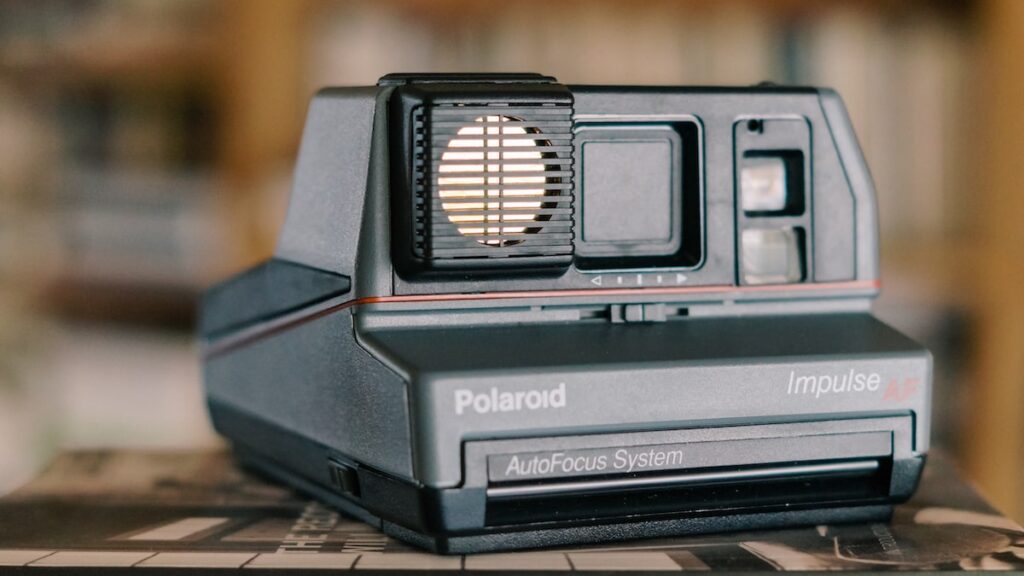
Before we proceed to the next section, here’s a quick recap of the pros and cons of the Polaroid Impulse AF.
Pros
- The Polaroid Impulse AF has a sharp lens.
- Great Sonar Autofocus.
- It is a good-looking camera.
- It pairs greatly with the 600 films.
- Excellent metering helps shoot great polaroids.
- Best point-and-shoot vintage Polaroid camera
Cons
- The Polaroid Impulse AF feels rather sensitive
- You can’t override the flash; it’s always on.
- The film is expensive.
For whom the Polaroid Impulse AF is
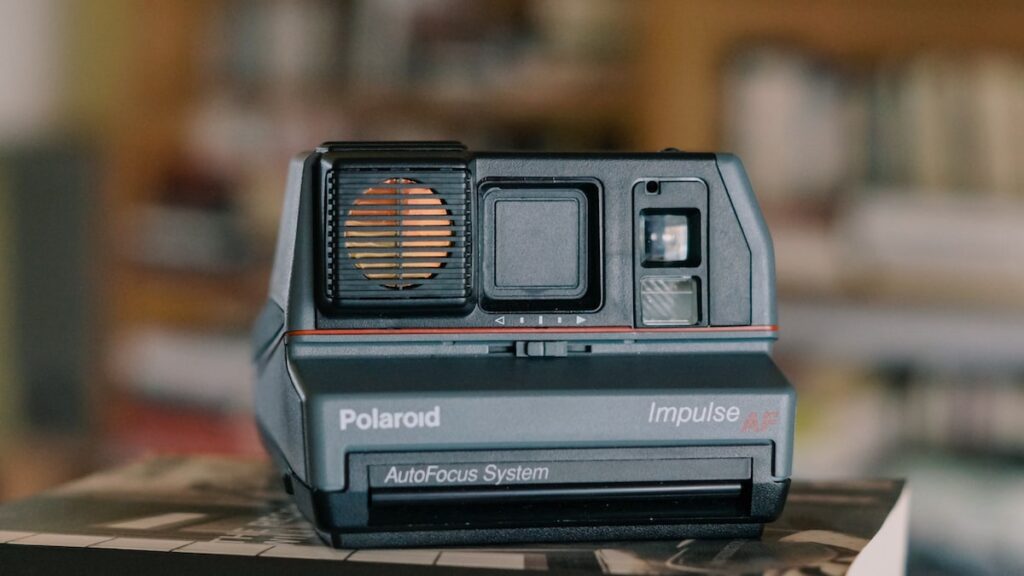
The Polaroid Impulse AF is one of the most easygoing instant cameras you can find. The fact that you don’t have to worry about the settings makes it an ideal Polaroid camera for beginner photographers. Practically, all you have to do is load a film, turn it on, and shoot photos. If you want to get into instant photography, that’s the camera to choose to get the polaroid bug. Everything will be a matter of composition -the camera will take care of the rest.
Advanced photographers searching for an occasional point-and-shoot experience with the instant film will also have fun using the Impulse AF. The camera will deliver some stunning images, and challenging your photography knowledge is always motivational.
On the other hand, people wanting to have full manual control or experiment artistically with different exposures and focus won’t be impressed by the Impulse. If that’s the case, but you still would like to shoot polaroids, it’s definitely better to look at the Polaroid SX-70.
Where can you buy the Polaroid Impulse AF

Since the Polaroid Impulse AF is discontinued, you can only find second-hand or refurbished cameras. As a rule of thumb, be extra cautious when buying second-hand vintage cameras. In the case of old polaroid cameras, a good strategy is to have an old 600 film cartridge to test if the camera works properly. If you buy it in person, just put the cartridge in the camera and see if it works (mechanic noise) and ejects the film (you can load a developed polaroid in the cartridge).
Your best option for buying a used but refurbished Polaroid Impulse AF is always the official polaroid store. You can visit the company’s website -here’s the US store, the EU store, and the UK store– and see if there is availability. Most likely, the camera will be out of stock, but it is worth looking at. If it is unavailable, you can add your e-mail and be informed when the Impulse AF is again in stock. Polaroid refurbishes the cameras and sells them with a 1-year guarantee.
If you want to buy one straight ahead, a much better option is to check on Amazon. Resellers always sell polaroid cameras, and their descriptions are mainly accurate. See the camera’s condition and the price and decide if it deserves buying it. Please keep in mind that these cameras are old, and, therefore, they will probably have signs of wear. Nevertheless, the important thing if they can shoot photos, not their looks. You can check here for used models on Amazon.
Lastly, you can always have a look at eBay. I didn’t have much look on eBay, though; therefore, I can’t highly recommend purchasing one from there.
Polaroid Impulse AF instant photography tips
Finally, I’ll share some polaroid photography tips that helped me to achieve nice results. Most of these tips apply to every instant camera, but I tried to remain focused on the Polaroid Impulse AF.
- The fastest shutter speed you can get with the Polaroid Impulse AF is 1/250. However, the camera has a lens aperture of f/9, so you should stand still when shooting. Otherwise, your photo will be blurry.
- Keep the exposure wheel in the middle. The Impulse AF does an excellent job, and exposure will be balanced. Therefore, if you are unsure, keep the wheel in the middle.
- Don’t forget that the flash is always on. Whether you shoot in dark interiors or intense daylight doesn’t matter: the camera’s flash cannot be overridden. So keep it in mind before composing.
- Remember the Autofocus. The Sonar Autofocus helps you get sharp images. However, the camera will focus on the first thing it “sees.” That said, if you want to shoot through a glass, the camera will focus on the glass. So ensure that the subject you want to shoot has nothing else in front of it. Unless, of course, you want an out-of-focus result for artistic reasons.
- Clean your camera rollers often. You should actually do it after every film you shoot, but I guess nobody does that. However, it would be best to do it as often as possible. Sometimes the chemicals in the photo will dry and stick to your rollers. If this happens, you’ll have unwanted blue marks spread in your developed image. See how you can clean the rollers here.
- Finally, don’t shake your polaroids. Polaroids won’t develop better or faster if you do that. In fact, you can damage the chemicals and, subsequently, the image itself.
Polaroid Impulse AF review: The verdict

The Polaroid Impulse AF is one of the best polaroid cameras ever made. Despite not being the friendliest instant camera for people wanting to experiment, this camera will give you perfectly exposed photos and an easygoing shooting experience. Look no further if you are after a camera that is easy to use and delivers beautiful polaroid photos.
Although it’s not the easiest camera to carry around, the fact it delivers such impressive results makes the effort rewarding. After all the years of shooting polaroid photography, I believe the Polaroid Impulse AF is the best point-and-shoot instant camera I have ever used.
More Polaroid Reviews: My Now+ Review, My Polaroid OneStep+ Review, My Polaroid Go Review
My Polaroids: My full Polaroid Diaries, My SX-70 polaroids
Pin it for later

Sharing is caring. If you enjoyed reading this Polaroid Impulse AF Review, please share it with your friends.
Last Updated on March 25, 2023 by George Pavlopoulos



Good review and I can confirm your findings. The lens is sharp and the exposure metering is consistent very good. The build in self timer is a bonus too. An enjoyable easy to use vintage Polaroid camera.
Would like to advise that according to the instruction manual the Impulse AF close focus distance is 60 cm.
Thank you, Jos. Glad you found the Impulse AF review helpful. Thanks also for adding the minimum focus distance according to the camera’s manual. Most online sources claim that it’s 90 cm (3 ft), but since you have the manual, I think your input is valuable. I bought the Impulse AF from a second-hand shop, so I had to look online for info; there was no manual in the box.
George